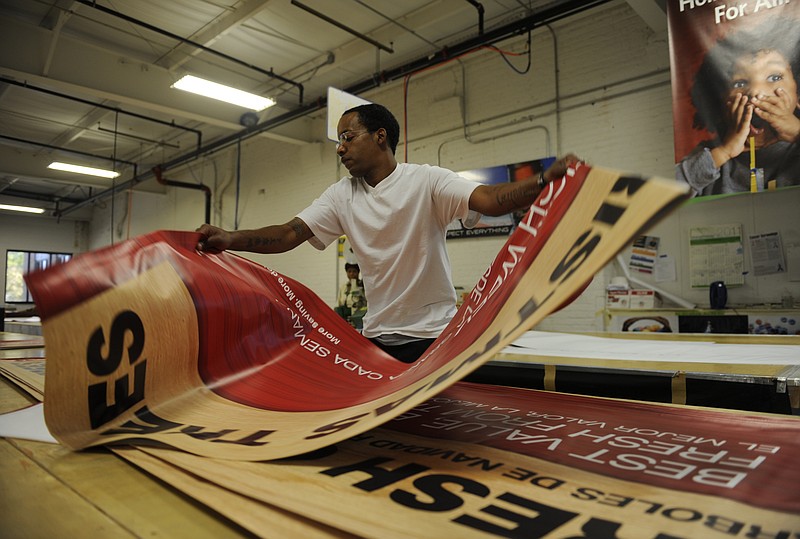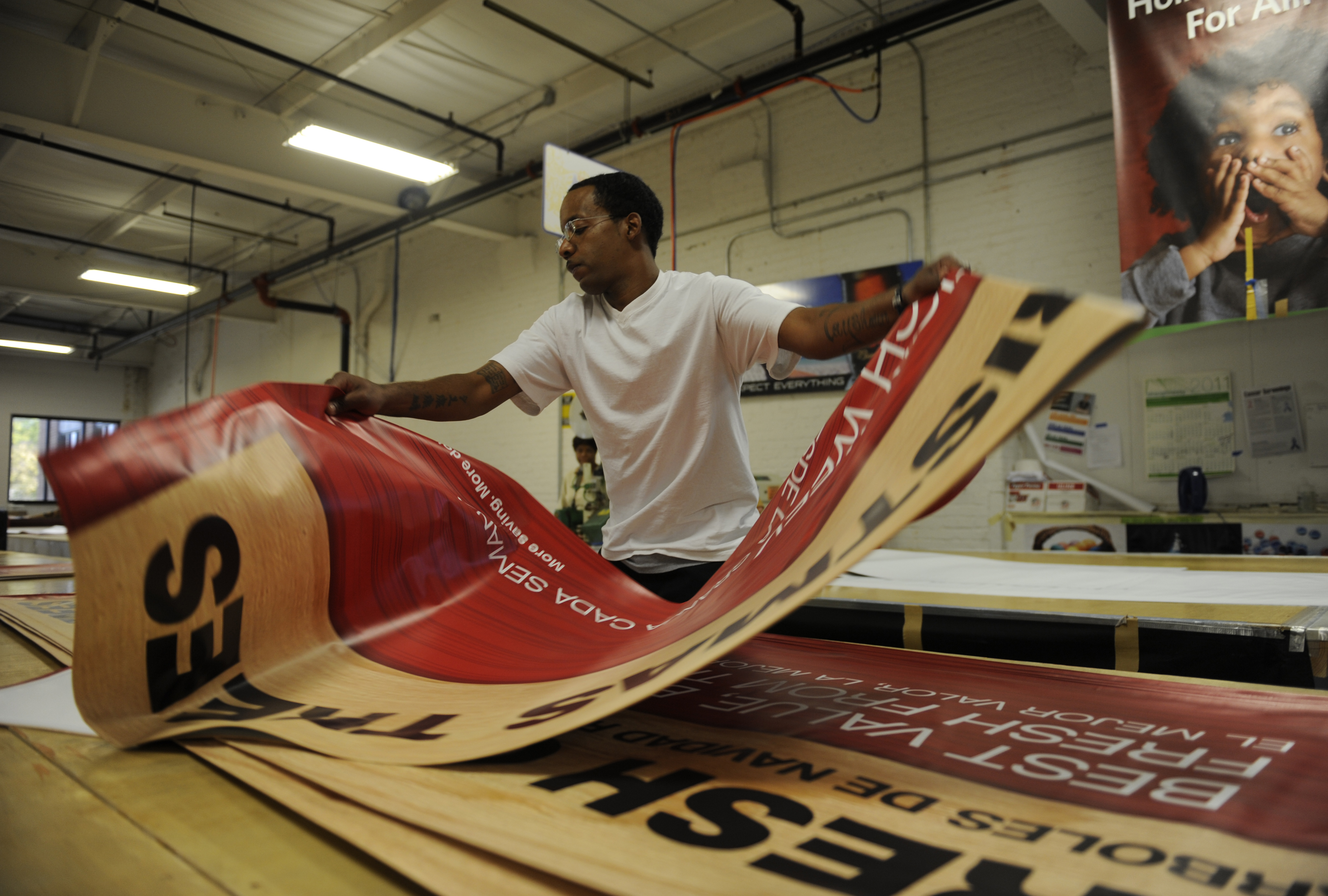Richard Mashburn figures Chattanooga's economic forecast is good enough that he can move home.
Mashburn has been living in Atlanta with his wife and kids, overseeing a few Chattanooga-area billboards while running his airport advertising company. When the chance arose in October for him to get 150 more Chattanooga billboards for $4.5 million, he saw more than a business opportunity. The Ooltewah High School grad saw an excuse to move back.
"When you're young you want to get out of Chattanooga, but when you're older it's a good place to have a family," he said. "Chattanooga's a great city. It's getting better every day, and for businesses it's a great place to be right now."
Nationally, outdoor advertising revenue was up 4.5 percent in the second quarter of this year over last, according to the Outdoor Advertising Association of America. That $1.9 billion growth continues a year of steady increases for the industry.
That growth followed steady losses for about a year in 2009. Industry revenue dropped by between 9 percent and 18 percent each quarter that year.
Mashburn expects to see solid growth in Chattanooga. Of the nearly 1,500 billboards in the area, Mashburn owns 175 and plans to add more, making Mashburn Outdoor one of the largest independent businesses in the field.
BY THE NUMBERS• $6.1 billion: Spending for outdoor advertising in 2010, up from $5.9 billion the previous year• $7.3 billion - The amount spent for outdoor adverting in the peak year of 2007• $4 billion - Spending on billboards in 2010, or 65 percent of all outdoor advertising• $983 million - Spending for signs on buses and transit stations in 2010Source: Outdoor Advertising Association of AmericaBILLBOARD REGULATIONSIn Chattanooga, outdoor signs are limited:• Maximum size is 14 by 48 feet• Maximum height is 50 feet• Distance from road is 20 feet• No billboards are allowed downtown, on slopes overlooking downtown or on scenic roads such as U.S. Highway 27.Source: Chattanooga city advertising codes
The company's independence from national billboard companies makes it hard to draw national advertisers. About 90 percent of its business will have to come from local sources, but Mashburn believes the Chattanooga market is a prime place for locally sponsored billboards.
"It's getting harder across the country because there is a saturation out there," he said. "Chattanooga's done a good job. There's a value to billboards."
BILLBOARD BANS
Regulators are trying to keep that value alive.
Richard Hutsell, a city zoning official, said there are few properly zoned, attractive sites for new billboards and the city is taking an aggressive stance to keep scenic areas advertisement-free.
For example, billboards were prohibited on the main roads around the Enterprise South industrial park just when the areas began to pick up traffic. The ads also are prohibited downtown and in scenic areas such as Highway 27.
That strategy has kept Chattanoogans happy. Hutsell said he hears only a couple of complaints about unsightly billboards every year.
"We're pretty highly regulated," said Barry Asmann, general manager of the local Fairway Outdoor Advertising branch. With 1,500 faces from Huntsville, Ala., to Cleveland, Tenn., Fairway is the biggest billboard company in Chattanooga. "We agree with that. Billboards just shouldn't be up in some areas."
Asmann said the local government is fairly restrictive when it comes to allowing new boards, but that can be a good thing. In major markets such as Los Angeles, the number of billboards can be overwhelming, hurting the effectiveness of ads.
Asmann and Mashburn aren't looking to build many boards, anyway. Fairway's boards are 85 percent occupied -- 90 percent in a good month -- and Mashburn bought his boards at 85 to 93 percent occupancy.
"With this economy, we're not really building," Asmann said. "When you're not at full occupancy, you're not building new boards."
DIGITAL FUTURE
When Asmann looks to invest in the business, he upgrades the boards he has.
Digital billboards are the future of the industry, he said. They offer the opportunity to instantly alter ads throughout the day, rotate in new messages every few seconds and eliminate printing and labor costs, benefiting Fairway and customers.
The boards are expensive, costing billboard companies hundreds of thousands of dollars compared to tens of thousands of dollars for regular boards. But billboard companies are able to charge a premium rate for the uncommon advertising medium.
The cost of the boards has been dropping. One of the first faces Hutsell saw go up in the area cost $475,000, while a more recent, similar face cost only $170,000.
Still, that high price creates barriers for smaller companies like Mashburn's, and the premium rate companies need to charge lessens the effectiveness for local advertisers.
"It needs to be to the advantage of a small-business owner to do it," he said.
BYGONE BILLBOARDS
More people likely have seen "SEE ROCK CITY" than have seen Rock City.
The attraction -- and Chattanooga tourism in general -- has a long history with outdoor advertising.
In 1937, five years after Rock City opened, employees started traveling the major roads painting the big white letters on blackened barn roofs, giving poor farmers a free paint job in exchange for the practically free advertising. Without the ads, several farmers would have had rotten roofs, and the tourist attraction wouldn't have fared much better.
"It probably would not be around," Rock City spokeswoman Karen Baker said. "We're so historically known for billboard advertising and outdoor advertising in general."
Rock City advertises through other media, including Facebook and Twitter. But the foundation remains outdoor advertising.
The company has about 100 barn roofs and as many billboards across the Southeast, and Baker said when the visitors are asked why they came, billboards are a top response.
The oversized ads are typically the lowest cost per thousand viewers reached medium, according to Joe Johnson, head of local advertising company The Johnson Group. They lack the sound and motion of radio and television, but when done correctly they still can be effective.
"Cost-effective, yes. Tricky, yes," he said. "Billboards are probably one of the mediums that are done incorrectly the most."
Drivers only have a few seconds to understand a message before they've blown by it at 70 mph. Any more than seven words is too much, he said, and creativity is key to making ads stand out.


